Started in 2012 and taking place in March every year to coincide with the International Women’s Day, the Nagoya Women’s Marathon in Japan is the largest women’s-only marathon in the world and each year, the event comprises of roughly 18,000 runners from more than 30 countries.
This race starts and finishes at the Nagoya Dome and the event is organised by the Japan Association of Athletics Federations.
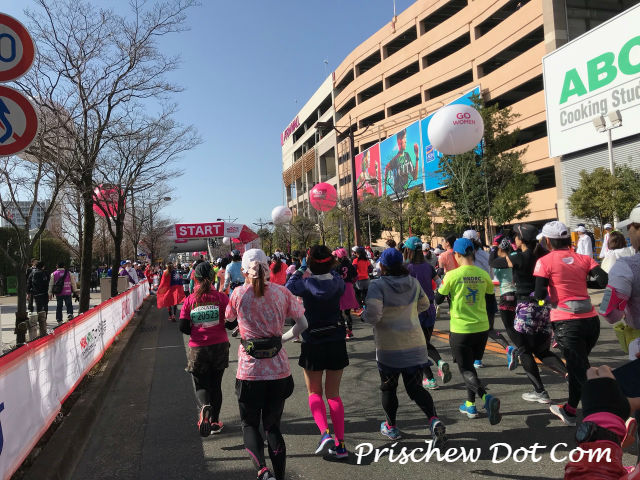
Tiffany necklace medals
This race is also well known by runners from all over the world, for presenting all of its finishers with an exclusively designed Tiffany necklace.
Got a slot for the Marathon
For the Nagoya Women’s Marathon, runners have to ballot for a race slot and the ballot had initially opened around September last year. Together with two of my friends, I did just this, and we had all been fortunate enough to get ourselves a slot for the marathon.
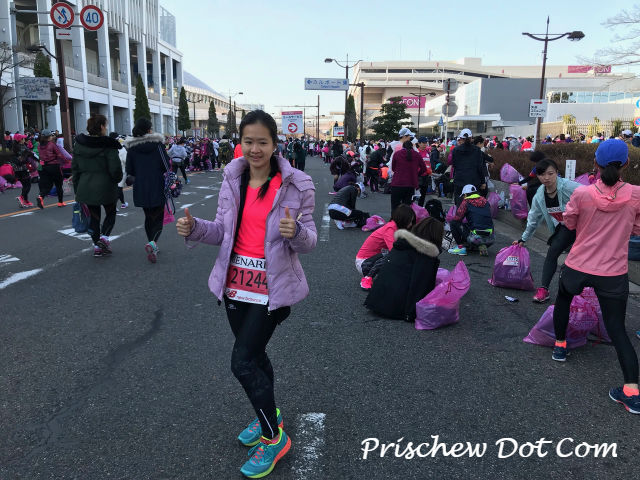
As I had never been to Japan prior to this marathon, this was a trip that I was naturally looking rather forward to, as I had heard a lot of good things about a lot of the Japanese races from many of my friends who had been there to run previously.
The 2018 race took place on Sunday 11 March and the flag off time was 9.10am in the morning.
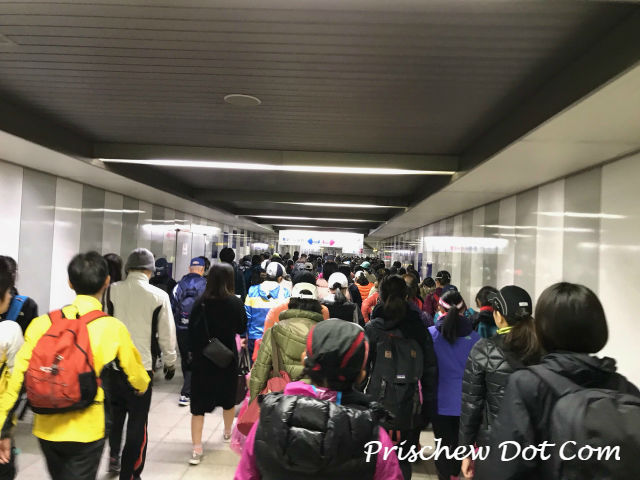
Woke up at 6.30am for the 9.10am flag off
So my two friends and I woke up at about 6.30am in the morning to get ready for the marathon. It was quite cold when I first woke up, with the temperature in the single digit range.
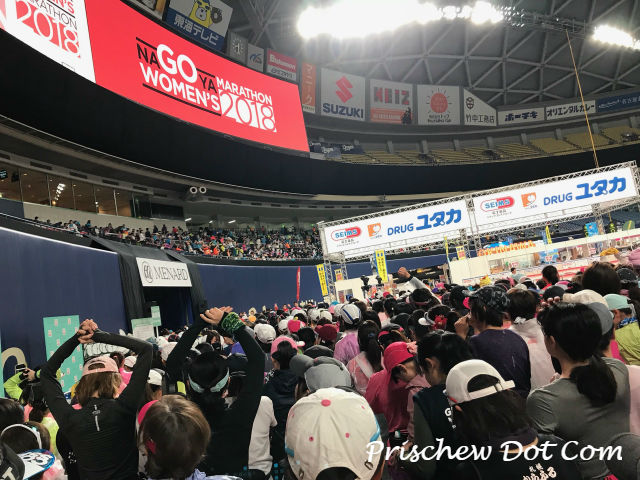
Combating the cold
As such, I was feeling quite cold, as I only had on a long sleeve compression top, a tee shirt as well as a pair of long tights for my run. So I put on an additional jumper and a thick jacket to conserve my body heat.
I had intended to throw the jumper away after a couple of kilometres as I knew that my body would heat up considerably as I was running. This had been a strategy that I had employed with success during the Gold Coast Marathon last year.
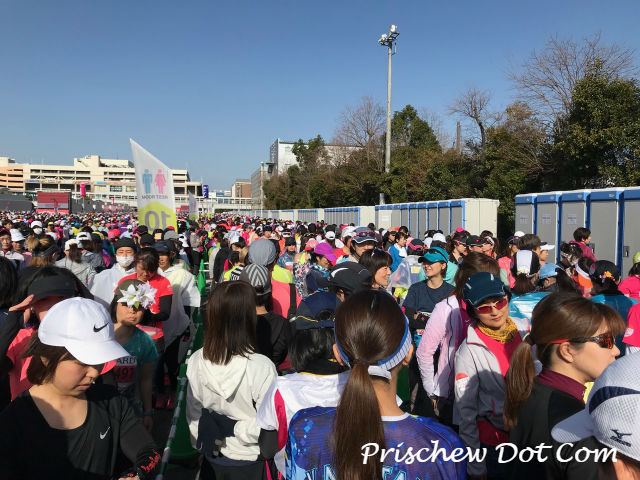
Taking the subway to the start line
As my accommodation had been a few train stations away from the Nagoya Dome, we took the subway down to the race site. The train had been really packed with runners all heading in the same direction and was possibly even more crowded than the Singapore MRT system during the peak hour.
Fortunately the subway did not break down on race day.
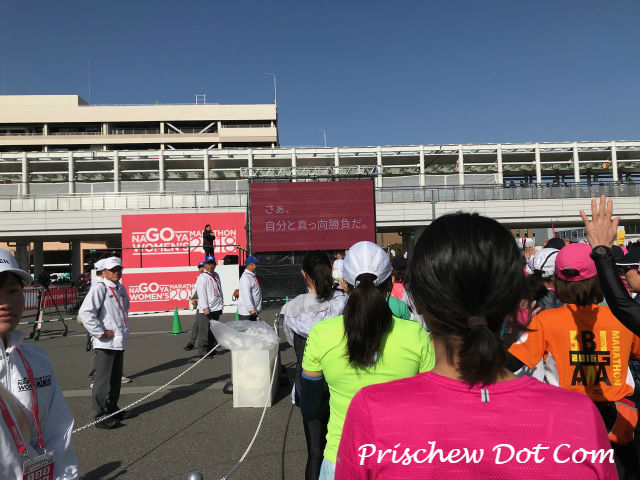
I admit that I had always been under the impression that the Japanese train system is very efficient but when I got here, I had quickly realised that this was not the case at all – there had been a massive train delay at the airport when I had first arrived in Nagoya, and at then later after the marathon, the entire Shinkasen line had broke down for two hours. So I guess that we were rather lucky on the day of the run.
We got to the race site within about half an hour, and when I got out of the train, it was again, really cold. Nevertheless we made our way to the baggage deposit area to drop off our bags before heading over to the start line. There had been plenty of other runners who were doing likewise, too.

Portable toilets were really crowded
Then after that, I headed over to the portable toilet before making my way to the starting pen. Based on my estimated finish time, I had been placed in Corral F.
The toilet queue was really long but fortunately it was moving fast enough, and I made it to my starting corral just in time, with seconds to spare But the runners in my corral were already beginning to move.
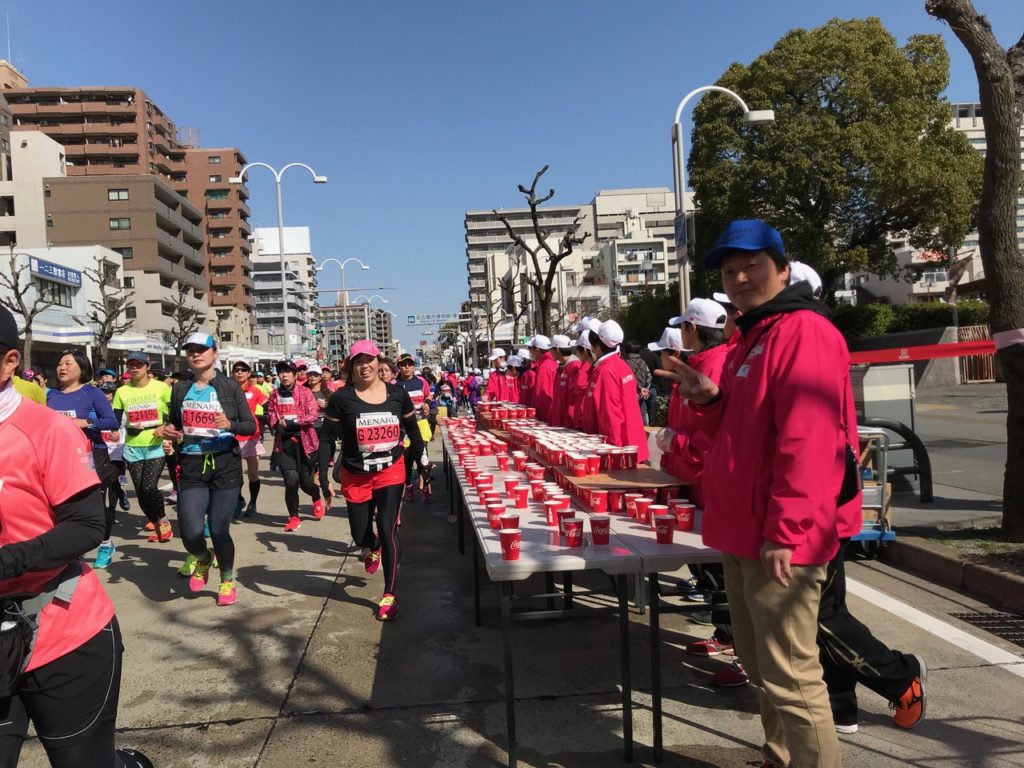
There were already quite a lot of toilet cubicles available but still, I felt though that having more portable toilets to cater to the sheer number of runners may have been even better.
But fortunately for me though, my GPS watch was able to pick up a signal quite fast, so I was not panicking and waiting for a signal.
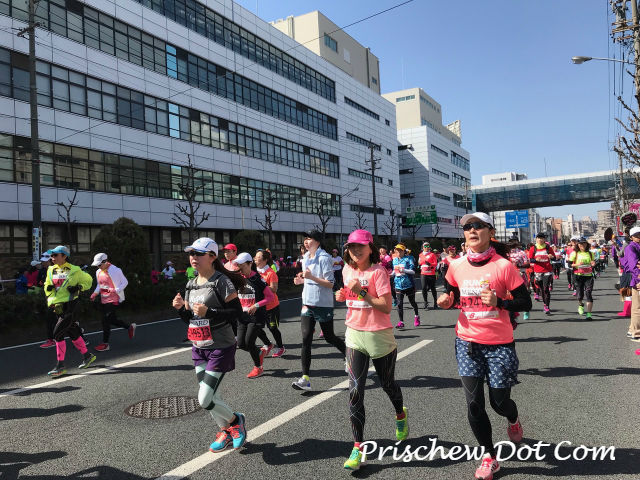
Beginning the Race
Before I knew it, the race began.
The route had been quite a flat one, taking runners past a few of the renowned attractions of the city such as the Nagoya Castle. However I found it to be quite loopy, so I felt that I had been passing the same landmarks quite a few times.
Added Edith Fung, 34, a Business Development Manager, “The course was really flat compared to some other marathons that I have run and the road was wide, but the scenery was not particularly nice though.”
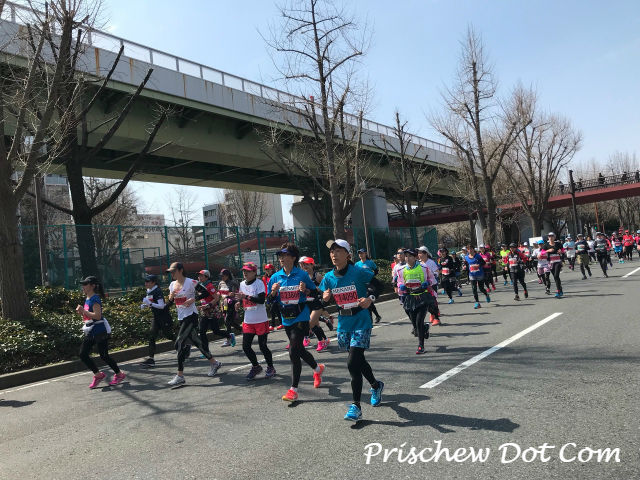
Said Cora Ang, 35, a lawyer, “I thought that the first part of the race was quite monotonous because it loops back round and there were not much sights there, but the second half takes runners past key sights such as Nagoya Castle so that made it more interesting.”
She added, “The park that we passed and the city hall area was also quite pretty and there was also some slight variation in the terrain at this section, with a few slopes going up and down, too.”
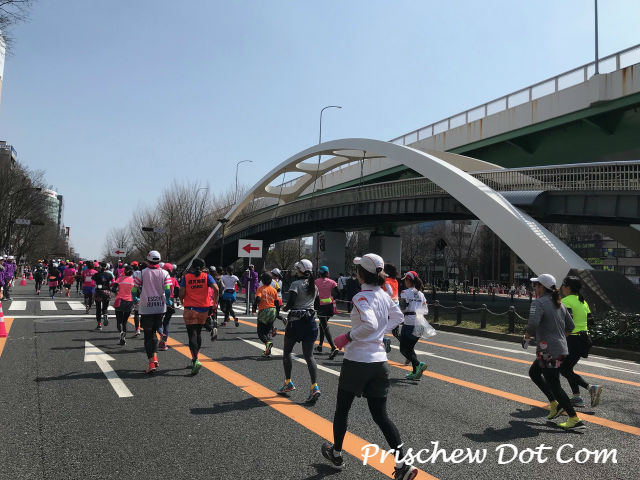
Packed
My first three kilometres or so, had been really packed with runners. I had intended to begin at a steady pace of about 6mins and 30sec per kilometre but I was unable to do so due to the large crowd. At times I felt myself running at about a 7mins per kilometre pace.
This had been a little slower than my targeted pace, but then again, starting out slow is always better than starting out too fast when it comes to a long race such as the marathon distance.
During this crowded stage of the race, runners were also pushing and shoving each other quite a lot, and so I got elbowed and shoved by other runners quite a few times.
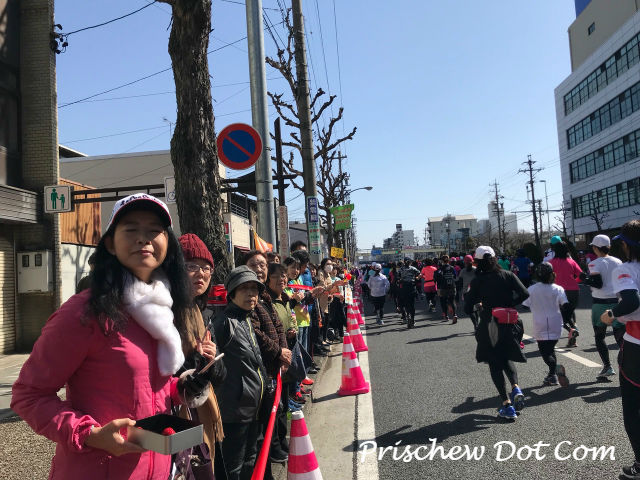
And unlike races in Singapore, where there are walkers from the very beginning of the race, I realised that, surprisingly, everyone in my corral at least, were actually jogging or running.
After a few kilometres I managed to settle into my race pace and from that point onwards, I was able to focus on my race and pacing strategy.
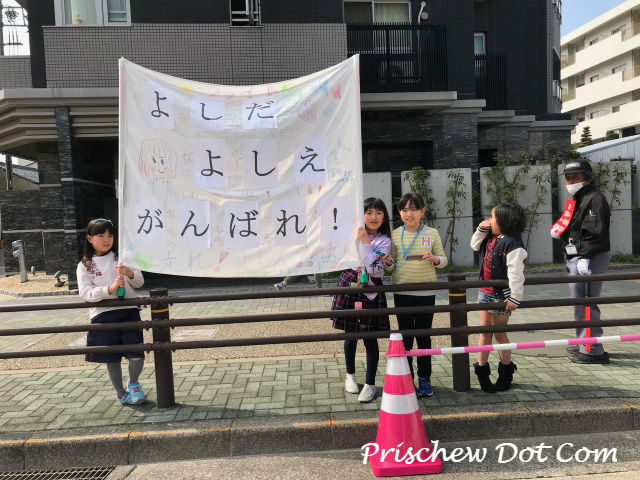
And after about two to three kilometres, I felt warm enough to toss my jacket to one of the volunteers on the sidelines. Apparently a number of runners were also tossing aside clothing. I saw a few jackets on the street, as well as plenty of ponchos and rubbish bags from runners.
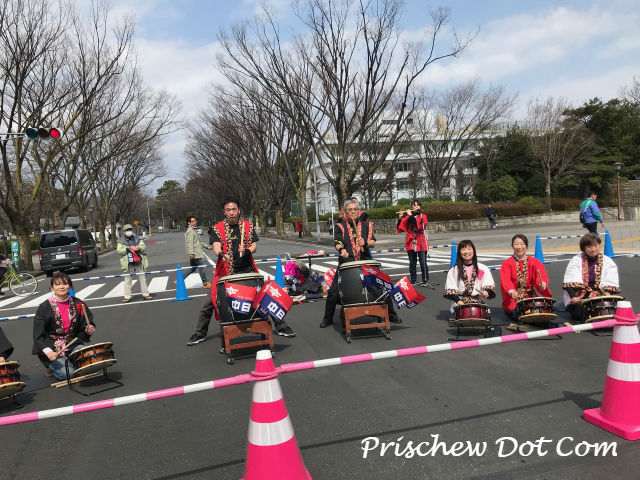
Excellent crowd support
The crowd support at the Nagoya Women’s Marathon was excellent. This was because throughout the entire 42.195km route, there were spectators lining the paths. I was quite amazed by this.
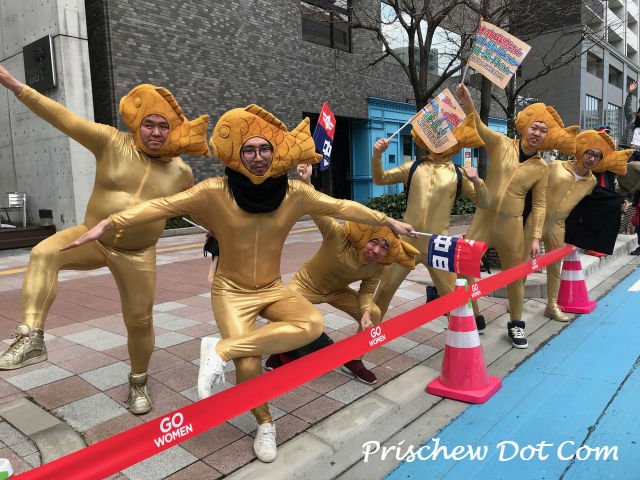
The spectators included people from all walks of life. There were young children whose faces really brightened up when I ran by them, stopping to give them high fives along the way, as well as elderly people, who were in wheelchairs, smiling as I passed them.
It was really nice to see that so many people in were out to support the marathon.
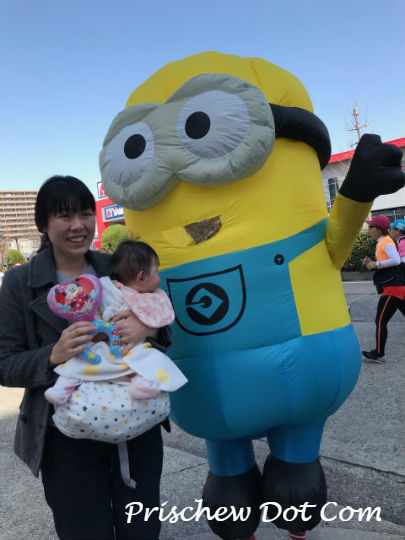
Agreed Edith, “The atmosphere of Japanese races is really hard to beat. In Japan, there are a lot of people who cheer on runners because the marathon culture here is really strong and the people are really into running.”
She added, “This is a big contrast to races in Hong Kong, where I live. For example, in the Standard Chartered Hong Kong Marathon, you do not have people who cheer for you till the last section of the race. People are really indifferent.”
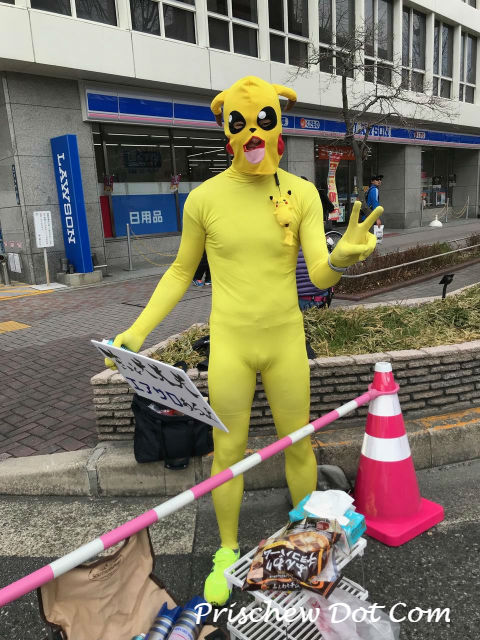
Some of the spectators had even been dressed up in really elaborate costumes. In fact, I recognised quite a few characters such as the Minions from Despicable Me and Pikachu from the Pokemon franchise and I had been pretty intrigued by all of this. They were clapping and cheering on runners and some even having prepared and cut out signs to brighten up and boost the mood of the runners who were heading past them.
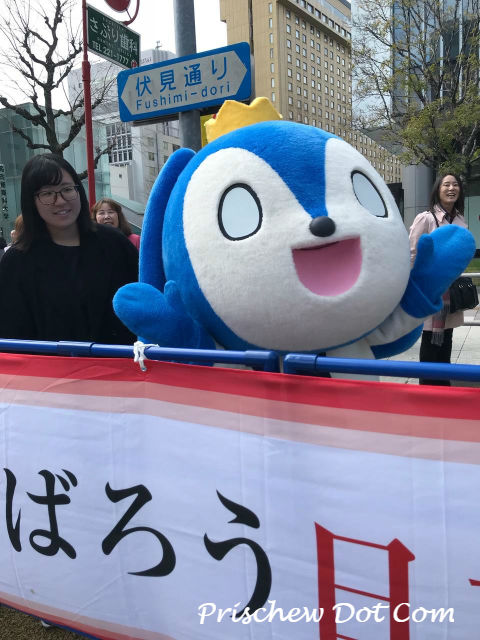
I thought that, seeing the spectators in their fancy costumes, was really motivating and I must say that it really helped to keep me going.
Besides the spectators, I also saw several actual runners in cosplay and I wondered how they had been able to run in these. Some characters included the SailorMoon girls as well as Minnie Mouse and I admit that their costumes were rather impressive.
Said Cora, “I really liked the fact that a lot of runners here enjoyed dressing up. That really helped to motivate me and for me to keep my pace. It made the race fun too.”
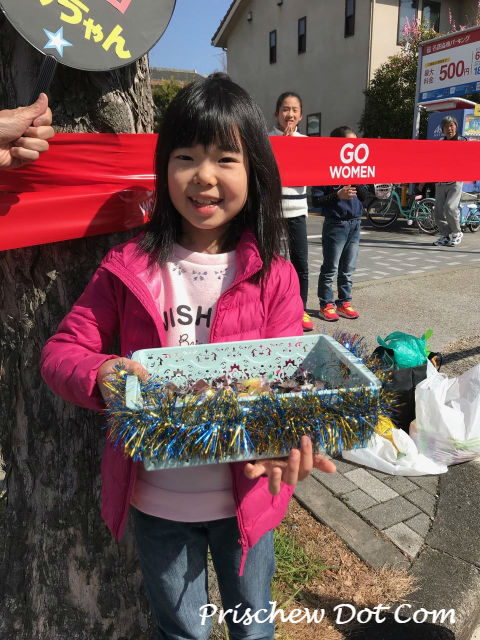
Spectators offered runners food and drinks
As well, many of the spectators offered runners food and drinks too. I felt that this had been really thoughtful and generous.
Some types of foods had included KitKat chocolates, toffees, fruits and other sweets, as well as drinks such as Coca-Cola and other isotonic beverages. For me, I took a KitKat bar, a strawberry as well as a toffee candy from a couple of the spectators.
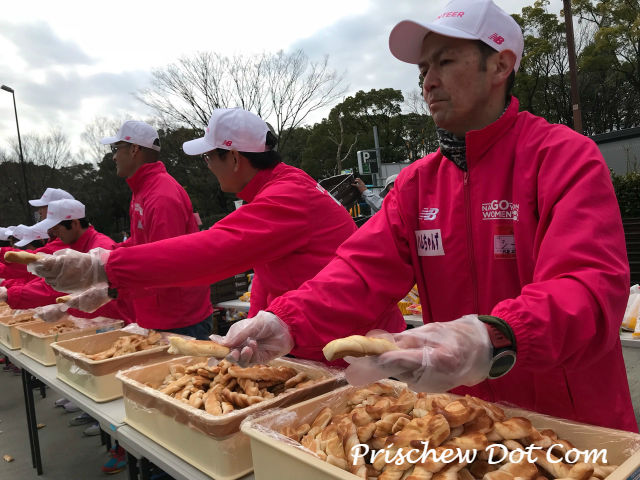
I also felt that a large part of why I had really enjoyed my 42.195km sightseeing tour of Nagoya, was because of all these people. The race did not feel boring at all and in fact, I had stopped many times along the way to take photos of the various characters, each colourful costume bringing a small smile to my face for their efforts.
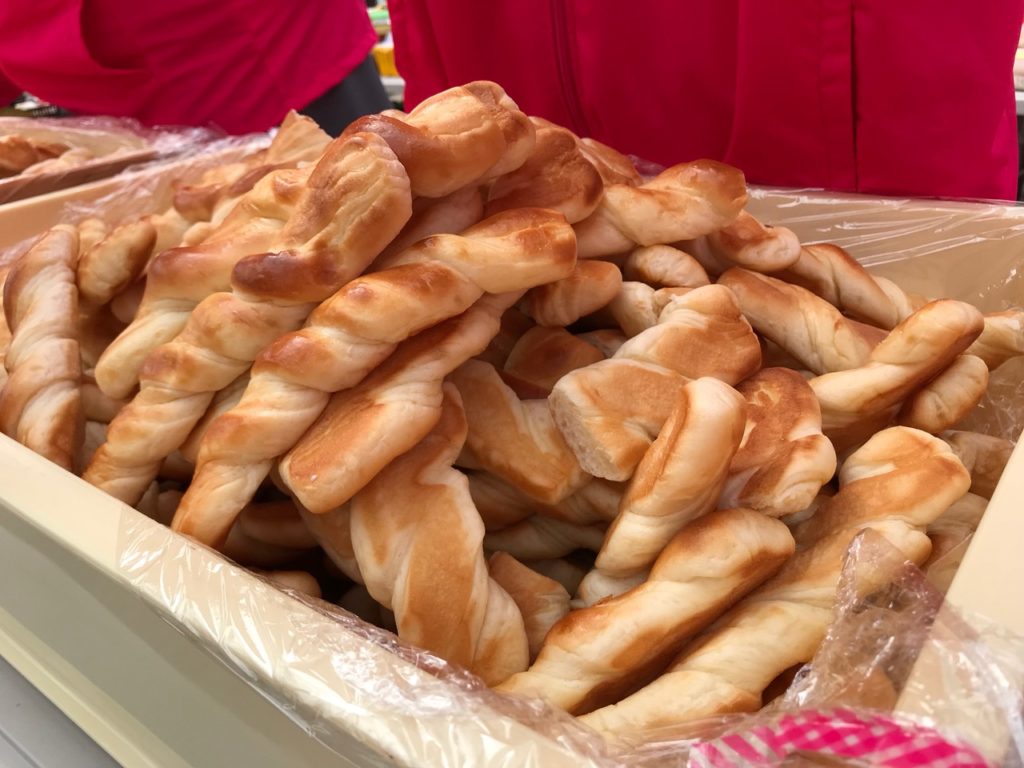
Running slightly faster than my targeted pace
I think that I was having so much fun that I did not quite realise that I was running a bit faster (about 6mins 20sec per kilometre) than my targeted pace of roughly 6mins 30sec per kilometre. But I was still breathing quite easy though so perhaps this meant that I had underestimated my fitness level because of the colder weather.
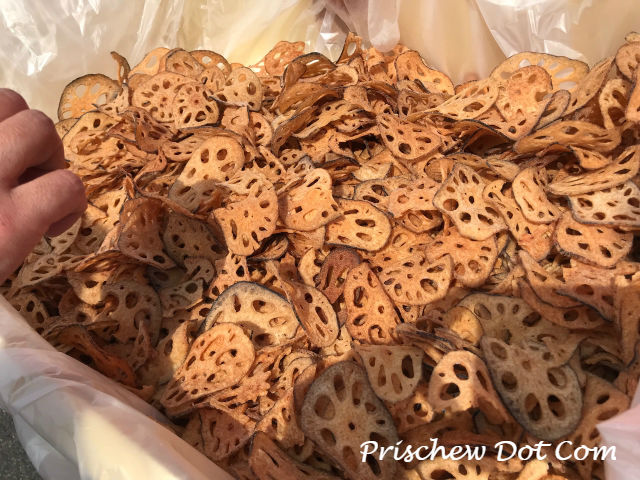
The sun came out about 40 minutes into my run. I must admit that with the sun to warm up my body a bit more, this had felt really good. But it was still a bit of windy at times, though, so there were segments of the race where it had become a little chilly. But by this stage, my body was feeling warm enough from running, that I did not need a jacket.
Added Edith, “The weather was really good for running today; it was quite cold yet sunny.”
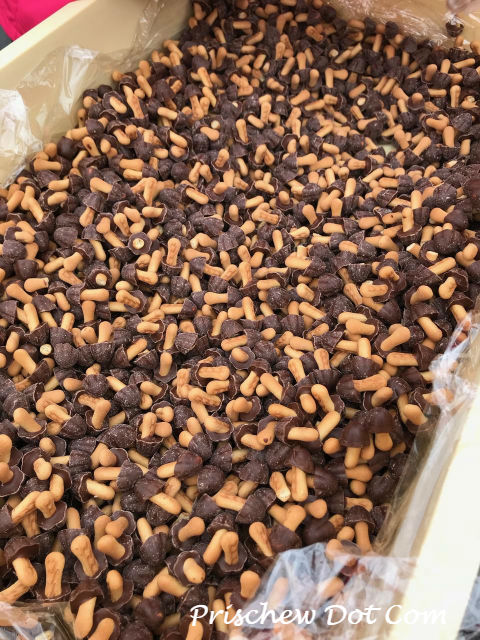
Official hydration stations were excellent
The official hydration stations along the race had been excellent. For both the isotonic drink and the water stations, there were several tables – sometimes as many as eight at a station.
I had quickly realised that most runners tended to crowd around the first couple of tables, though, so after the first couple of drink stations when quite a lot of people were pushing and shoving each other to get hydration, I learnt my lesson and chose to get my race hydration from the later tables – to avoid from the crowd.
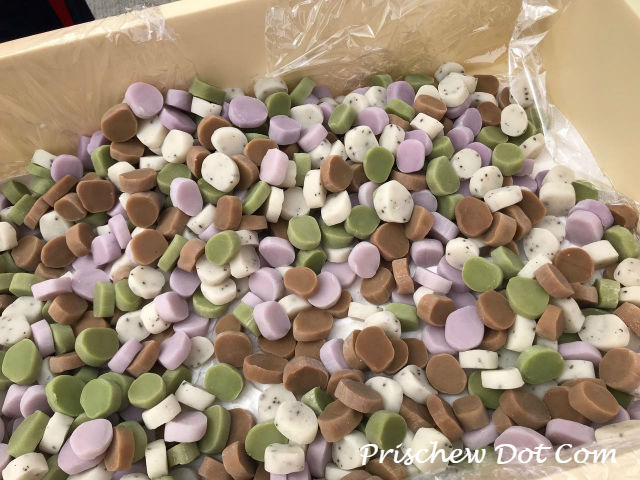
Official aid stations offered runners food too
Besides hydration, the official stations also offered runners a selection of food items, and these included Lotus root chips, bread, bananas, rice crackers, chocolates and glutinous rice cakes.
Wanting to soak up the atmosphere and enjoy the race as much as I could, I made it a point to stop at each one of these official food stations in order to try a bit of the food. They all looked really delicious. I thought that this wide selection of Japanese snack foods on offer, was really generous.
I had consumed these along with my energy gels and salt tablets as part of my running race strategy. I think the snacks helped to give me the energy that I had needed to keep on going throughout my race, and they gave me something to look forward to at the aid stations!
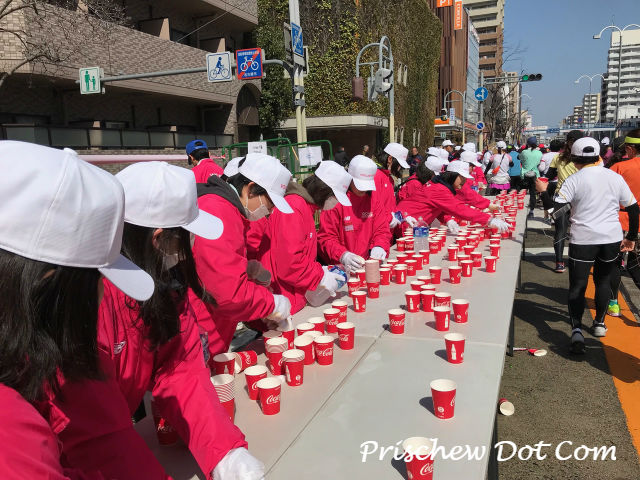
Surprisingly for the Nagoya Marathon, I felt good throughout the run and my legs didn’t get cramps. I wondered whether it was because of the fun that I was having, or because my training for the past few months had paid off. I sped up after the 30km point because I was still feeling quite good and at 32km, I focused on hitting a constant pace of below 6mins per kilometre.
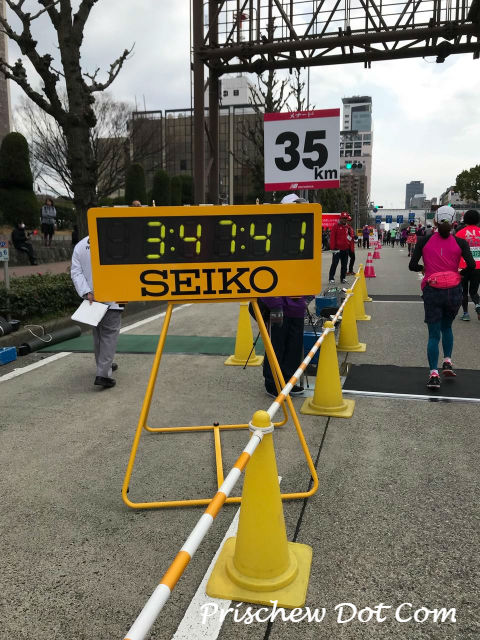
This was a negative split race strategy and only the second time that I had done it successfully – the previous time had been was at the Gold Coast Marathon.
I also admit that it had felt really good to be passing people who had been walking or jogging really slowly during the later stages of the race and their agony propelled me to want to run even faster.
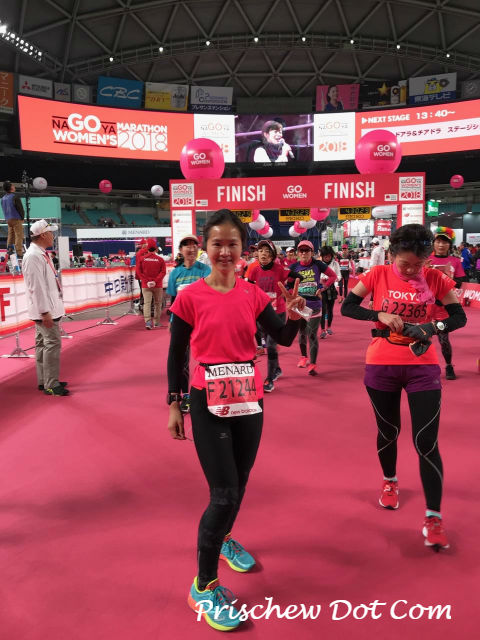
The Tiffany Necklace
The marathon race finished back inside the Nagoya Dome, where it had started. We ran into the dome and ended the run on the stadium tracks.
I had crossed the finish line in a new official personal best timing of 4hours 21mins and 36sec.
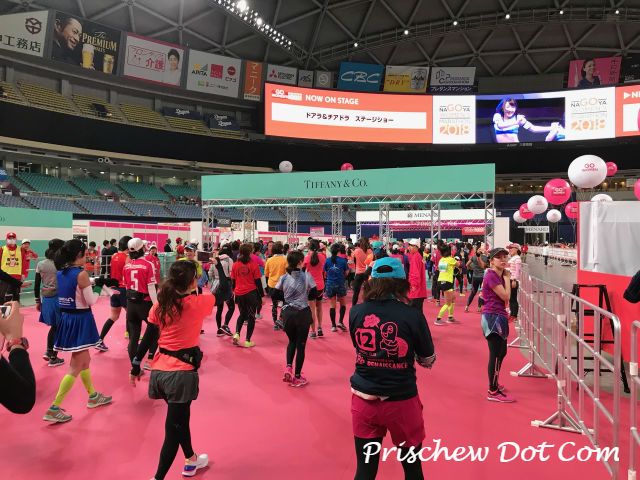
I was rather happy with this time, a ten-minute improvement over my previous best marathon timing from the Gold Coast. I had thought the cold weather really helped me in terms of my running, to maintain a pace that I would probably not have been able to do, in Singapore.
Upon crossing the finish line, each runner was then presented with a Tiffany necklace by a guy dressed in a tuxedo.
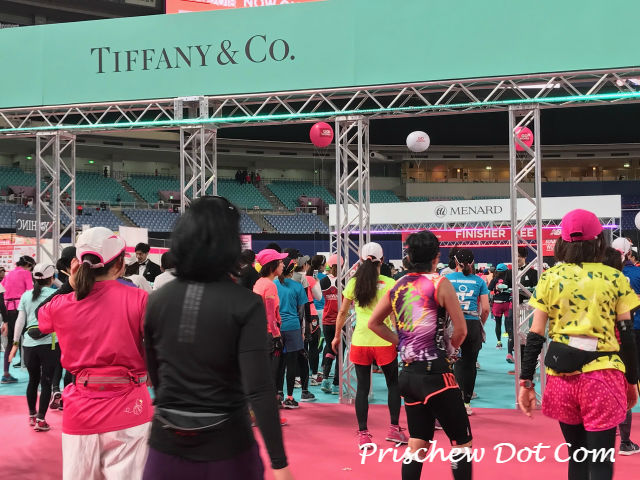
This had been the very moment that I had been looking forward to, throughout the entire 42.195km of running.
So after receiving my beautiful Tiffany necklace, I simply could not resist but join the long line to queue up for a photo with one of the tuxedo guys. I had thought that would be a great way for me to remember my experience at the Nagoya Women’s Marathon, by.
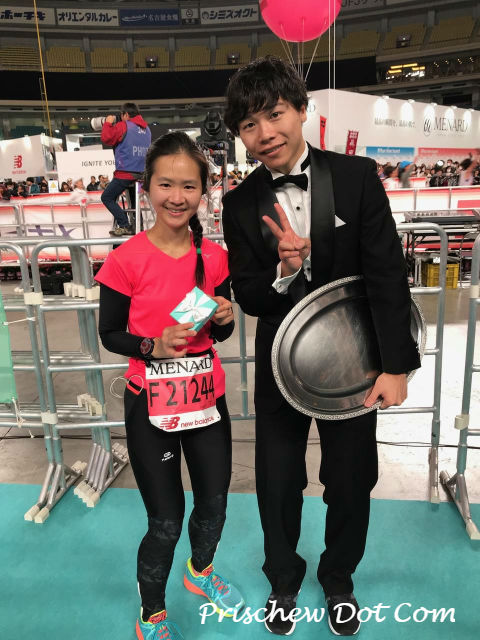
Said Cora “The Tiffany bling is what this race is known for and that is the only reason why I did it. It was great motivation for me to finish my very first road marathon, ever. The guys also really played their part well; I felt as though I was in a Japanese drama and that I was the princess and that the tuxedo guy giving me the necklace, was the prince.”
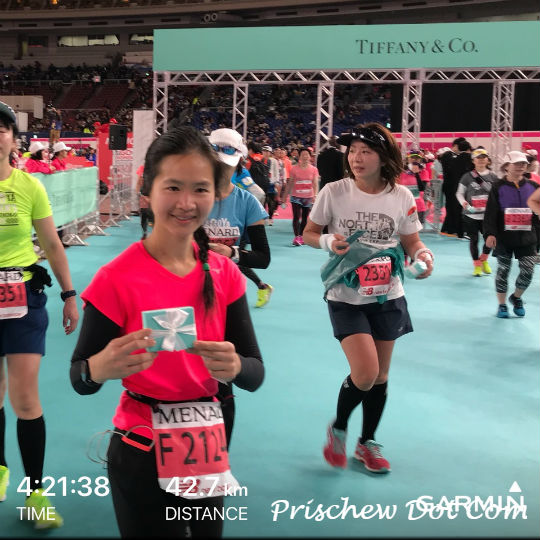
Agreed Edith, “Oh, who could forget the Tiffany necklace? That was the only reason why I ran this race. But the tuxedo guys were quite funny though. They asked me to pose but I did not know what to do, so the guy got down on his knees to propose to me! I was like, oh okay – it was really funny!”
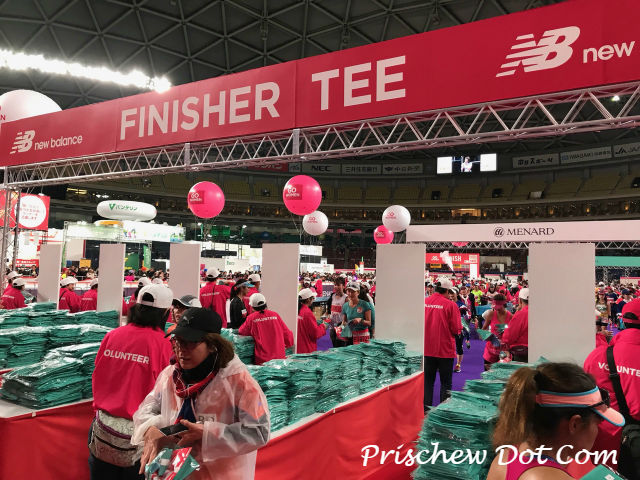
Besides the Tiffany necklace, runners also received a finisher tee shirt, an event towel as well as post race food and drink items to replenish our energy, including bananas, bread rolls, isotonic drink and water.
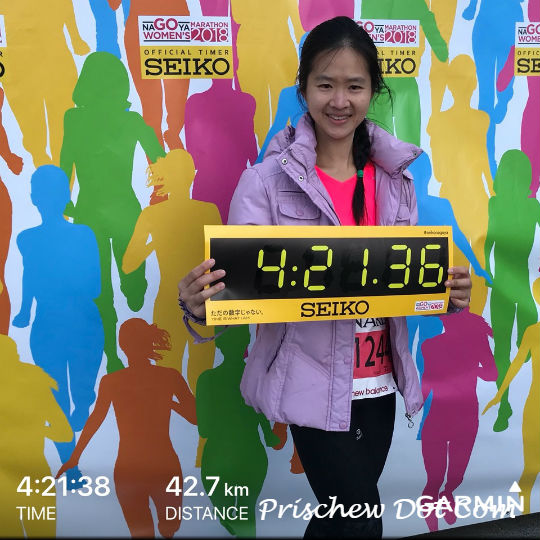
Said Cora, “While the food was good, I would have like to have seen more variety of food. It was still cool when we finished so having Miso soup or something warm at the end point, would have been amazing.”
We were also given a paper carrier bag to put all of our items in. This had been very thoughtful of the organisers because I’d had quite a lot of things to hold by this point.
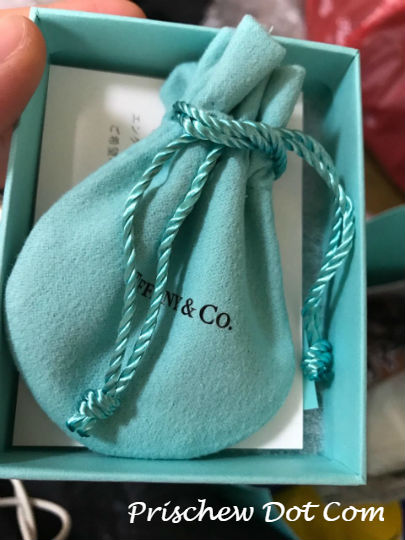
Around the finish line area, runners also could queue to receive their official finisher times on the spot and we were given a number card, courtesy of the official timing company, Seiko, in order to pose for pictures with our timing. I did this.
I really liked the fact that we could receive our finisher times on the spot, unlike many races in Singapore where runners have to wait for at least one to two days before having access to our finish timings.
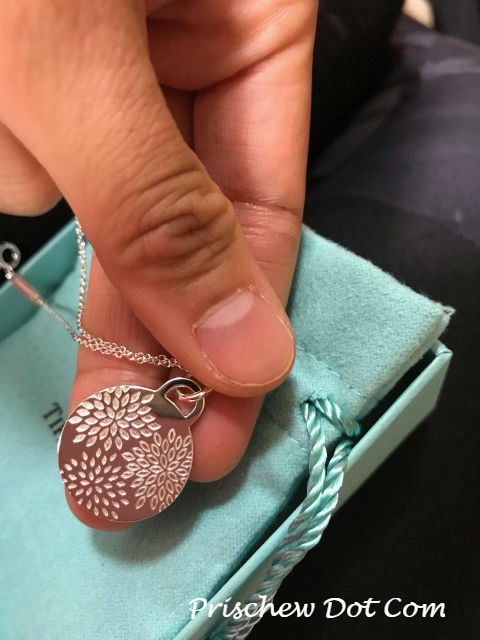
Overall Thoughts
Overall, I can see exactly why the Nagoya Women’s Marathon is the biggest women’s only marathon in the world and why it is so popular. This race is definitely great fun to run in and the atmosphere and culture is really amazing compared to anything that I have taken part in previously.
Added Cora, “It was a very ecstatic experience for me and an exciting first road marathon. The atmosphere made me feel very motivated throughout.”
Click here for my Nagoya Women’s Marathon 2019 review.

Leave a Comment